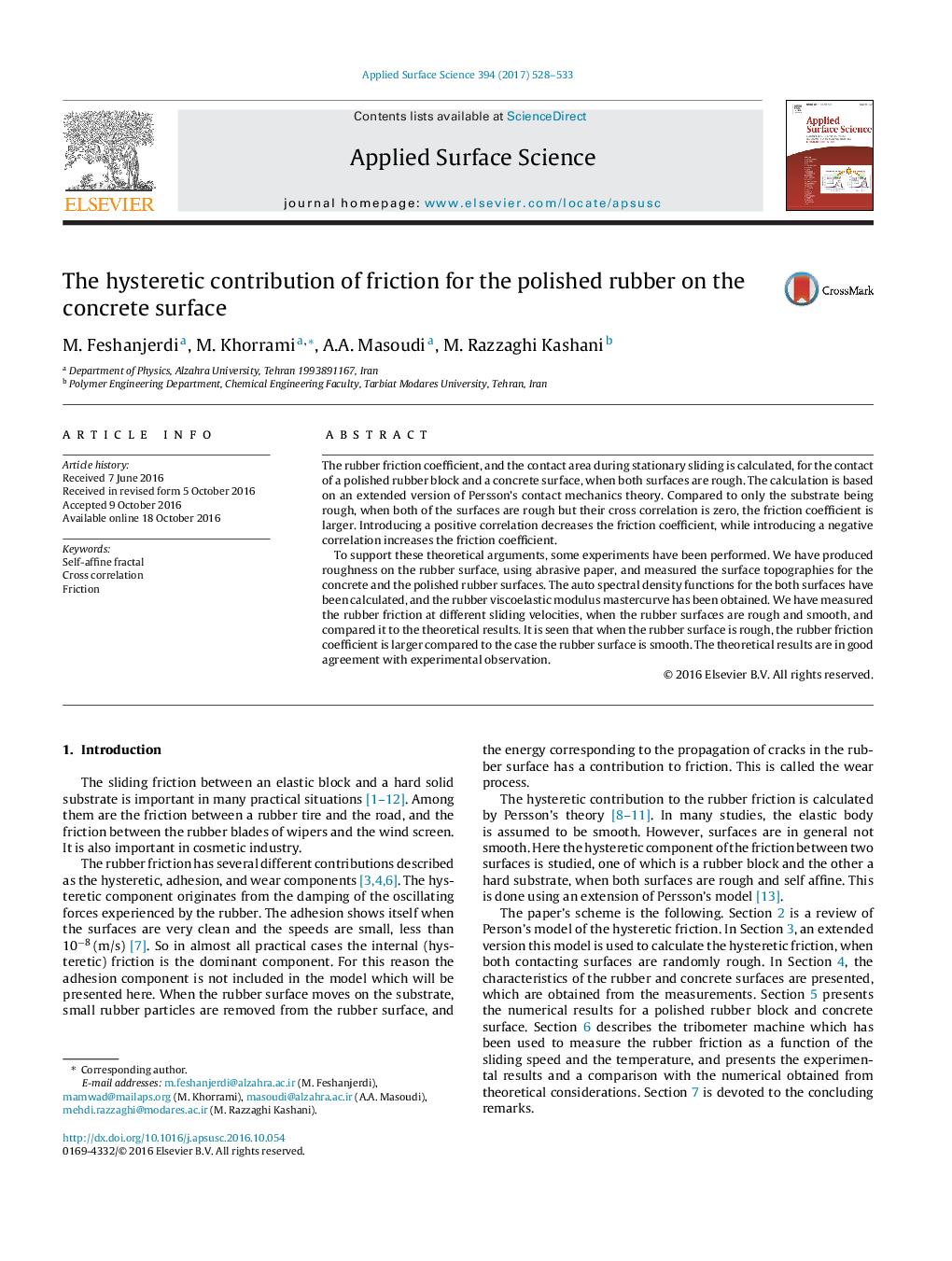| Article ID | Journal | Published Year | Pages | File Type |
|---|---|---|---|---|
| 5352937 | Applied Surface Science | 2017 | 6 Pages |
Abstract
To support these theoretical arguments, some experiments have been performed. We have produced roughness on the rubber surface, using abrasive paper, and measured the surface topographies for the concrete and the polished rubber surfaces. The auto spectral density functions for the both surfaces have been calculated, and the rubber viscoelastic modulus mastercurve has been obtained. We have measured the rubber friction at different sliding velocities, when the rubber surfaces are rough and smooth, and compared it to the theoretical results. It is seen that when the rubber surface is rough, the rubber friction coefficient is larger compared to the case the rubber surface is smooth. The theoretical results are in good agreement with experimental observation.
Related Topics
Physical Sciences and Engineering
Chemistry
Physical and Theoretical Chemistry
Authors
M. Feshanjerdi, M. Khorrami, A.A. Masoudi, M. Razzaghi Kashani,
